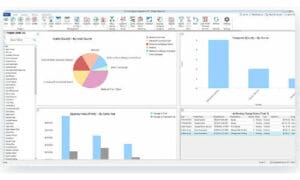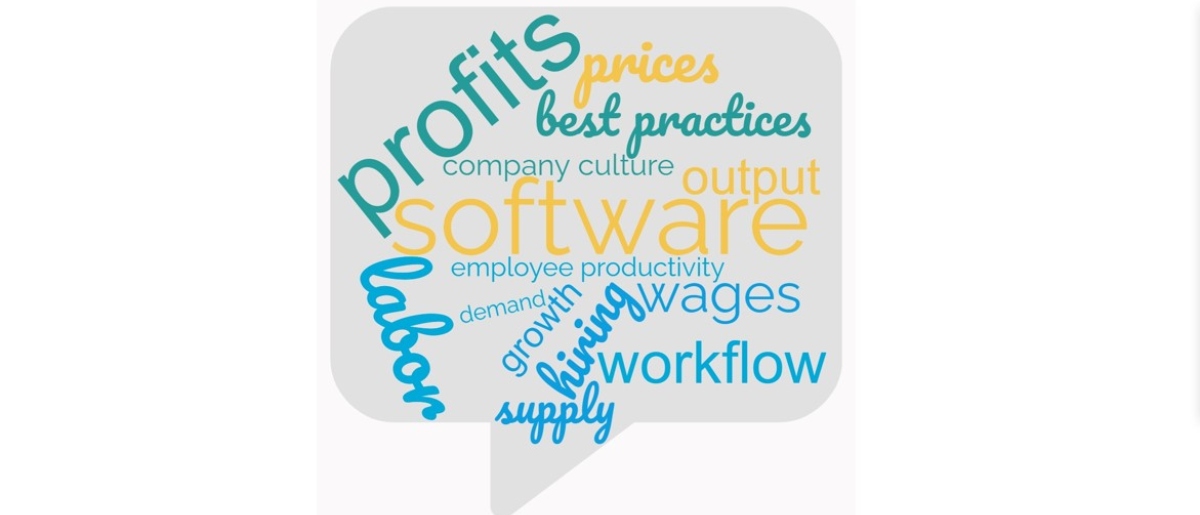Every integration company is busy… in many cases busier than they have ever been. And the backlog does not look to be subsiding. The immediate reaction among most custom integration companies is to add personnel, but there are other actions dealers can take to mitigate the situation and boost employee productivity.
“You can either ride the wave or get crushed by it. You choose,” Randy Stearns, CEO of D-Tools, says. “There are three options for handling growth. First, we can increase supply, or in other words, increase the size of our workforce. Second, we can control the demand by limiting the number of projects you accept. Third, you can increase employee productivity.”
Speaking at the recently held Total Tech Summit in Orlando, Stearns made the case for integrators to opt to increase their employee output by undertaking several key steps that can result in 20% to 30% more productivity.
Why Are You So Busy?
Before a commercial AV integrator can take steps to mitigate the workload, it’s important to first recognize why most firms are overloaded with work right now.
Obviously, COVID-19 drove consumers to seek out entertainment options at home, which meant upgraded home theater and audio solutions were in high demand. At the same time, many consumers had more disposable income due to the inability to travel and dine out so they embarked on home improvement projects.
Likewise, work from home and distance learning situations became the norm over the past two years, bringing increased demand for quality home networks installed by integrators, who were deemed as essential employees by the U.S. Department of Labor.
The continued demand for more entertainment options and improved home networks combined with general economic growth stoked by a strong pandemic recovery means most custom integration companies will remain swamped with work, according to Stearns.

D-Tools CEO Randy Stearns says there is no better time to raise labor rates than right now with inflation being so high.
“There are two main factors that drive economic growth: One is the size of the workforce and the other is the productivity in terms of output per hour worked,” says Stearns.
Looking at a demographic profile of the U.S., the massive Millennial generation — those who are just graduating from college to those nearing the age of 40 — is in the midst of its prime working years right now.
“That means we are going to have the largest workforce we’ve ever had for the next 10 to 20 years,” notes Stearns.
The second driver of economic growth is productivity, and the technological revolution that began in 1971 continues to improve employees’ ability to perform more work, faster.
“All this explains why we will continue to see steady growth for some time to come. So hold on to your hats… the train has left the station. What are you going to do about it?” ask Stearns rhetorically.
Should You Add Employees?
The continued growth and demand mean there will continue to be pressure to find and retain top quality talent in the workforce. The rising inflation hitting the U.S. means it is even more costly to hire employees. According to data from ITR Economics, employee salaries have risen a staggering 9.1% compared to one year ago.
“I want to caution you on hiring,” says Stearns. “It’s expensive. It’s time consuming. It’s hard work. Not only are you paying higher wages today, you risk whether or not that new employee is going to be a cultural fit, whether he or she is a team player, and whether he or she has the skills that required to get the job done.
“And when you have done all that, there is no guarantee you’re going to make more money. You are adding dollars to the top line, you are adding infrastructure costs, vehicles, salaries, desks, training time, etc. When it’s all said and done, you may not be adding dollars to the bottom line after all,” concludes Stearns.
Another strategy besides hiring more people that can ease demand is to simply be more selective on the projects you accept.
“You can control demand. Just because you have more demand for your services does not mean you need to accommodate it,” says Stearns.
Raising Prices Is a Good Idea
So before adding more employees, Stearns recommends integrators embark on several other tactics that could ultimately increase productivity by up to 30% and bring more money to the bottom line.
“If you have a good reputation and do quality work, it likely means you’ve established strong, exclusive relationships. Maybe that means you can raise prices, in particular the labor rate you charge customers.
“Raise prices 10%… raise prices is 12%… raise prices to 6%. When you raise prices, every additional dollar you bring in drops straight to the bottom line, because you’re not adding infrastructure costs. You’re not adding cost of goods… you’re just taking in more money. With inflation being so high, now is the time to raise your prices.” explains Stearns.
He uses the hypothetical example of a $3 million integration company with an EBITDA of $300,000. If that company raises prices by 10% to boost its gross income to $3.3 million, that additional $300,000 goes immediately to the bottom line.
“You’ve doubled your profit. It’s easy math. It’s a good idea,” notes Stearns.
Building a Solid Company Culture
Increasing employee utilization can be a boon to an integration company’s bottom line and, once again, help ease the project backlog. Employee utilization is defined by the percentage of total employee hours are actually being billed to customers.

Speaking at the Total Tech Summit, Stearns told integrators that by applying best practices to your business they could boost their employee productivity by up to 30%.
Full employee utilization of 100% is impossible, since every employee takes vacation and every employee needs to have training time to stay up to speed on the latest product innovations.
But do integrators really need to be paying technicians to linger around the coffee machine in the morning or while they are driving from the office/warehouse to the jobsite?
Before you can embark on a quest to boost your employee utilization rate, Stearns says it is vital for an integrator to make sure he or she has a solid company culture in place that is characterized by high morale and engagement. Having a strong company culture will ensure employees are receptive to changes and working together as a team toward a common goal of improved productivity.
Stearns recommends using the Gallup Q12 company culture tool as a great place to start. The tool asks employees to answer 12 simple questions with the idea being for owners to start meaningful conversations with their employees. The 12 questions are:
- I know what is expected of me at work.
- I have the materials and equipment I need to do my work right.
- At work, I have the opportunity to do what I do best every day.
- In the last seven days, I have received recognition or praise for doing good work.
- My supervisor, or someone at work, seems to care about me as a person.
- There is someone at work who encourages my development.
- At work, my opinions seem to count.
- The mission or purpose of my company makes me feel my job is important.
- My associates or fellow employees are committed to doing quality work.
- I have a best friend at work.
- In the last six months, someone at work has talked to me about my progress.
- This last year, I have had opportunities at work to learn and grow.
“A lot of your employees are Millennials,” says Stearns. “They are all about experiences. What kind of team-building exercises or experiences can you take your team through that’s will be fun, unique and a once-in-a-lifetime experience? By doing that, the team members will get to know each other better and care about each other more. They will want work more closely with each other and with you.”
By showing appreciation, gratitude, support, and respect, business owners will find their employees are willing to go the extra mile to be more productive.
How to Boost Employee Productivity by 30%
Establishing effective standard operating procedures is another key way to boost productivity. For example, having an established workflow process avoids a situation in which a technician arrives on a jobsite and does not know which tasks they are supposed to complete that day (and the order of the tasks). Having that written task list as their guide eliminates wasted time.
In some cases, technicians opt to select the “easiest” task when they first arrive at the job instead of the necessary task. Other “time wasters” can include conducting meetings without a set agenda or time limit, not having established communication protocols from the field, and not setting routine reporting requirements in terms of timeframe (i.e., daily or weekly) or hierarchy (i.e., speaking to the lead technician or project manager).
Stearns, who previously owned a CE Pro 100 company based in the San Francisco Bay Area, related how switching from having his technicians come to the office every day to instead going directly to the jobsite boosted employee productivity by 35%.
“I changed the operating procedure so that technicians took home their own company-owned vehicles every night and drove directly to the jobsite. They clocked into when they arrived at the jobsite, worked 8 hours and then clocked out when they left the jobsite. The only time they were ever in the office was for safety meetings every other week. My utilization rate went from 63% to 87%. That’s a huge jump. I would have had to add five employees to achieve the same gain,” he notes.
Use Software to Increase Efficiency
Utilizing a full suite of features in an end-to-end software, like D-Tools or others, for operating a custom installation company will allow integrators to achieve tremendous efficiency gains in sales, proposal generation, engineering, project management, service, purchasing and inventory, communications and more.
 “Software is a very powerful thing, but in many cases it is not taken advantage of. Software products are better than manual systems. There is no reason to pay for software and not exploit the power of that software fully to make you more productive,” says Stearns.
“Software is a very powerful thing, but in many cases it is not taken advantage of. Software products are better than manual systems. There is no reason to pay for software and not exploit the power of that software fully to make you more productive,” says Stearns.
“Improving the level of team engagement, establishing and implementing best practices, and exploiting productivity tools can combine to achieve a 20% to 30% productivity gain without raising infrastructure costs. Moreover, if at the same time you can double your profit by raising prices 10%, you just tripled or quadrupled your profit,” concludes Stearns.
“You can do all this with your existing team, and there’s no new training and there’s no new risks. Also, your employees are happier because they’re more productive. They feel better about themselves when they go home at the end of the day, and they feel better about the company they work for because the company’s very well run. Your clients are much happier as well because they’re working with a company that’s really dialed in, is predictable and communicates well.”
This article originally appeared on our sister site CEPro.com.






































